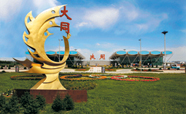Datong Coal prepares to expand its industrial chain
In 2009, the park had a total of 8.7 billion yuan worth of output in 2009.
It was listed in the first group of pilot recycling economy parks by the provincial government.
Construction work on it started in 2003.
Several State leaders have visited Tashan, including President Hu Jintao and Vice-premier Li Keqiang.
Tashan Coal Mine, which was expected to turn out 15 million tons annually, went into operation at the end of 2008.
The group owns 54 coal mines in Shanxi and the Inner Mongolia autonomous region, covering a total area that is 300 kilometers east to west, and 600 kilometers north to south.
Since 2005, the annual output has been hundreds of millions of tons for six consecutive years, compared to a mere 80,000 tons annually in the initial stages.
The high-quality coal it produces has been exported to Japan, South Korea, India and Turkey.
To consolidate its place in the coal industry, Datong Coal plans to open six shafts with an annual output of 10 million tons.
It has turned itself into an energy conglomerate, with a core business of coal, power, chemicals, coal machinery, construction materials, and logistics.
The Datong Coal Mine Group goes back to 1949, the year of New China's birth, and it has produced a cumulative total of 1.8 billion tons of coal over the past 60 years.
It has paid a total of 41.3 billion yuan in taxes, making it the No 1 taxpayer of all of China's coal companies.
It has 200,000 employees, and 75 billion yuan in total assets.
The 10 park projects are a coal mine, eight plants, and one railway. The Tashan coal Mine will have an annual output of 15 million tons; the coal preparation plant will have an annual output of 15 million tons; the pit-mouth power plant will have an annual generating capacity of 1,200 megawatt; the power plant for the comprehensive utilization of resources will have an annual generating capacity of 220 mW; there is a methanol plant with an annual capacity of 1.2 million tons; a plant with an annual output of 240 million bricks of coal rubble; a plant that produces 50,000 tons of kaolin a year; a dry cement clinker production line with a daily production of 4,500 tons; a sewage treatment plant which handles 4,000 cubic meters of sewage daily; and the railway which is used for transport around the park.
Copyright 1995 - 2010 . All rights reserved. The content (including but not limited to text, photo, multimedia information, etc) published in this site belongs to China Daily Information Co (CDIC). Without written authorization from CDIC, such content shall not be republished or used in any form. Note: Browsers with 1024*768 or higher resolution are suggested for this site.

